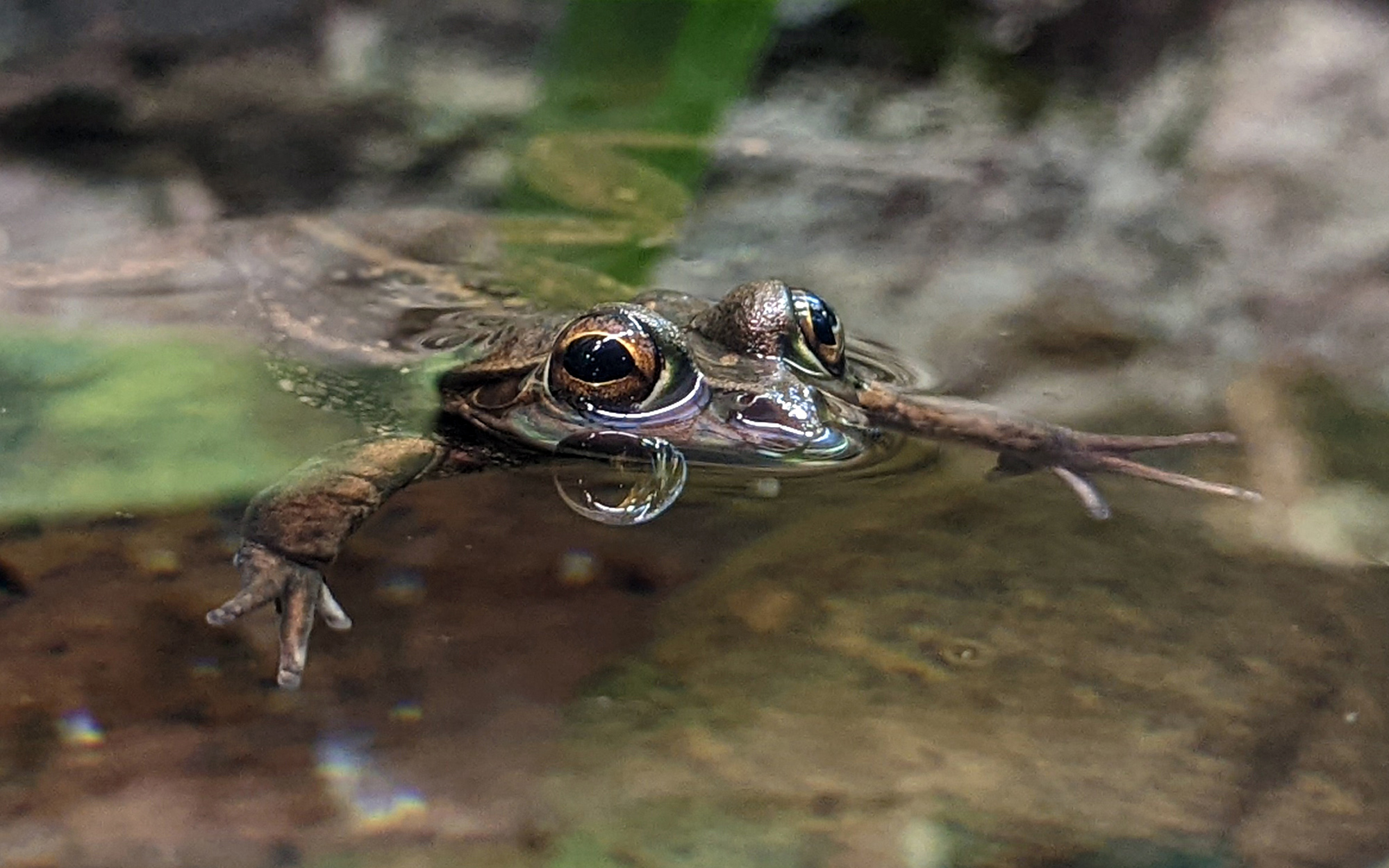About the monitoring projects
The department uses monitoring and research projects to track if changes in water management protect and improve water-dependent environments. We have obligations to report on the environmental outcomes in NSW.
To enable this, the department has developed the Environmental Outcomes Monitoring and Research Program (EOMRP). This ensures that science-based decision-making is used to manage surface and groundwater water environments.
What are we monitoring?
We are working together with researchers, universities, and other government agencies to study how flows affect river resources such as nutrients, aquatic insects, native vegetation, fish, frogs, and turtles. We undertake monitoring across NSW in both inland and coastal catchments.
The Environmental Outcomes Monitoring and Research Program has 5 main themes:
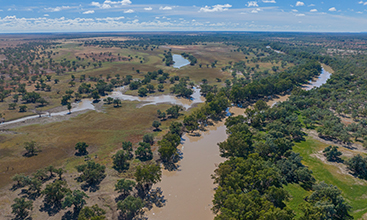
Connectivity from rivers to floodplains.
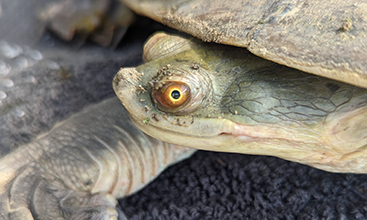
Native fish, turtles, frogs, invertebrates, mammals and waterbirds.
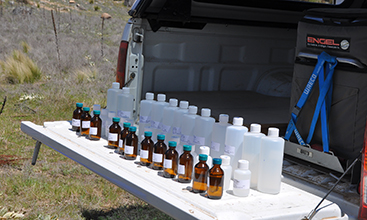
Resources and nutrients required to support aquatic health.
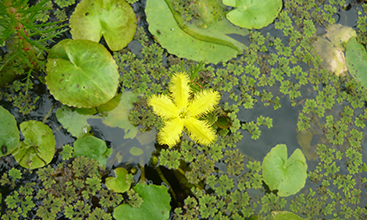
Native riparian, floodplain and wetland vegetation.
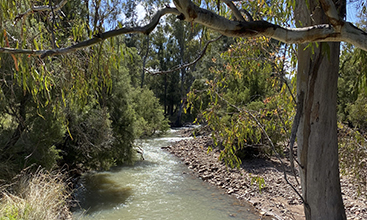
Environments that depend on groundwater to survive.
Why do we monitor changes?
One of the key drivers of environmental outcomes in surface water environments is river flow. In particular, the location, magnitude, timing, frequency and duration of river flows affect environmental outcomes.
These river flows can be broken into broad flow categories, which include cease-to-flows, low flows, fresh flows, bankfull, and overbank flows (Image 1). Each flow category can influence a range of habitats and organisms. In NSW, how river flow is managed is driven by the Basin Plan (2012) and the water sharing plans developed under the NSW Water Management Act (2000).
Our monitoring and research projects evaluate and report changes in surface water environments. The EOMRP will improve our ability to assess the effectiveness of water sharing rules and water management in NSW. This research will help us ensure that rivers are managed sustainably, and that the health of our water environments is maintained or improved.
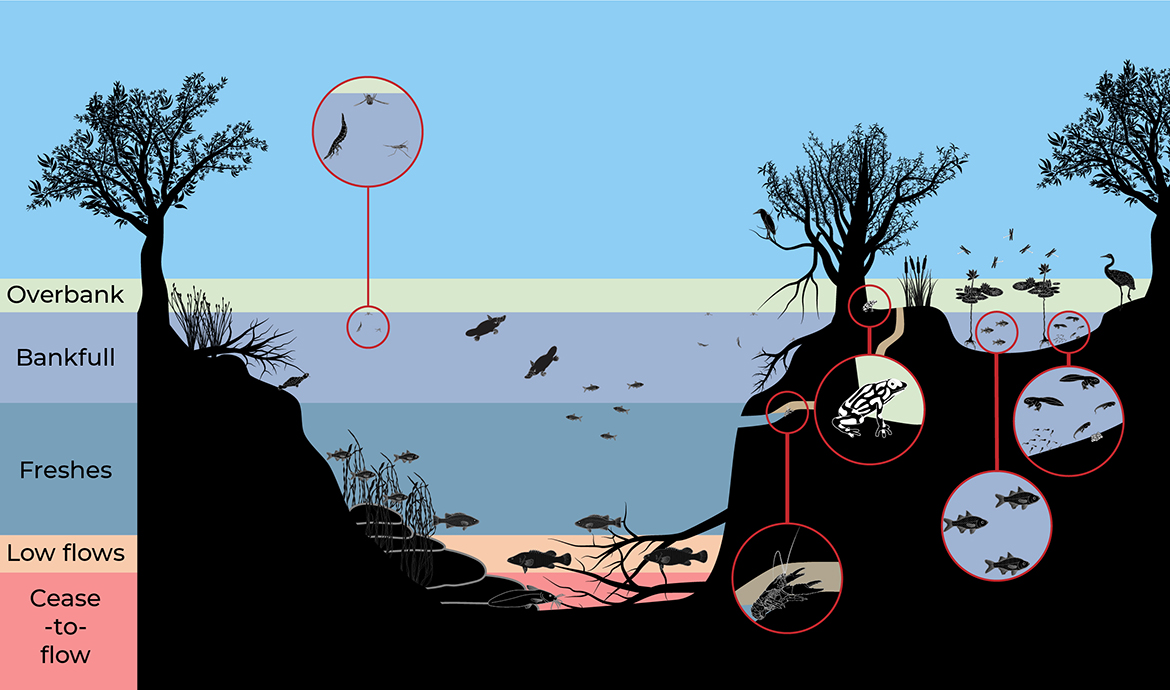
Environmental Outcomes Monitoring and Research Program outcomes for 2022-2024
Twenty eight projects were commenced, continued from 2021-2022, or completed under the 5 themes in 2022-2024.
Floodplain connectivity and inundation
- ‘The Floodplain inundation mapping project’ continued and produced over 3600 images of inundation extent across the floodplains of the northern Murray-Darling basin.
- Trialled a method to determine the volume of floodplain pools using drone imagery.
- Monitored the surface area and persistence of 373 key floodplain pools using Landsat imagery going back to 1987.
- Trialled the use of hydraulic models to validate overbank water requirements in the Namoi catchment.
Water dependent fauna
Fish
- The ‘Golden perch movement in the Murray-Darling Basin using acoustic tracking’ project continued and has found that fish use the Boomi River as a transport route to avoid obstacles in the Macintyre River during higher flows. Ongoing collaboration with DPI Fisheries.
- The ‘native fish monitoring in coastal NSW using environmental DNA’ project continued and has now sampled the environmental DNA in 19 of the 20 coastal water sharing plan areas. These results are providing important baseline information on the fish community of each catchment including the proportion of native versus invasive species. Ongoing monitoring will provide information on migratory patterns.
Turtles:
- The ‘freshwater turtle movement in the Gwydir’ project continued. The first year of the project has established that turtles move mostly in Spring, can pass regulator structures and may migrate from wetlands to rivers. Collaboration with the University of New England.
- The ‘coastal freshwater turtle monitoring, using underwater videos’ project continued. Surveying across the Manning River catchment found 66 turtles, 19 of these were the endangered Manning River turtle. This work will help us identify the significance of flows on freshwater turtles to inform the flows required to protect them.
- The ‘Impacts of cold-water pollution on freshwater turtles in the Murray-Darling Basin’ project commenced. This aims to inform the revision of the Cold-water pollution strategy by investigating the impact of cold-water pollution on freshwater turtle body size, reproductive output, basking behaviours, movement behaviours, and hatchling growth rates. Collaboration with the University of New England and LaTrobe University.
Stream Frogs
- The ‘environmental flow requirements for stream frogs’ project continued. Stream frog flow requirements have been developed to assist with the evaluation of the environmental outcomes for frogs in unregulated river water sharing plans.
- The ‘frog environmental DNA development’ project continued. This is being used to monitor Booroolong frog population extent, and will have capabilities to sample 30 frog species in NSW. This “environmental DNA library” will be publicly available for any individual or organisation to use. Collaboration with the University of Canberra.
- The ‘Status and water requirements of the Booroolong frog in the Cockburn River water source’ project commenced. This will use the newly developed environmental DNA assay to monitor the reintroduction of this species, and help to identify the flows required to protect them.
Macroinvertebrates:
- The ‘state-wide modelling of stream invertebrate responses to low flows’ project continued and showed that different assemblages of insects occur under different flow conditions changing the food resources that are available for fish and other fauna. This information will be used to evaluated and inform water sharing plans.
- The ‘linking temporal changes in stream invertebrates and flow’ project looking at species composition in relation to low flows continued. This project is situated in the unregulated water sources within the Murrumbidgee catchment and will have transferable outcomes for all similar water sources in the Murray-Darling Basin.
- The ‘Snowy River environmental flow monitoring’ project continued looking at whether stream invertebrate communities were restored after an environmental flow regime was introduced to the Snowy River and other montane rivers. Collaboration with DPE-Environment and Heritage Group.
- The ‘impact of climate change on flow and temperature regimes – effects on alpine freshwater ecosystems’ project continued to look at whether increases of water temperatures and reduced flow from climate change and water regulation will affect stream invertebrate communities and thus food availability for other fauna. Collaboration with University of Canberra and Griffith University.
- The ‘River regulation and the impact on macroinvertebrate egg laying and recruitment’ project was completed. This project looked at whether altered flow regimes in NSW’s regulated rivers limit the supply of stream insect eggs, by limiting the availability of egg laying habitat.
- The ‘influence of tributaries on macroinvertebrate communities’ project continued. This is aimed at determining how unregulated flow from a tributary can shape macroinvertebrate populations in a regulated river
- The ‘Giant dragonfly – assessing environmental DNA detectability and environmental water requirements’ project continued and has successfully identified the presence of the endangered giant dragonfly in its upland swamp habitat using environmental DNA sampling.
Fauna diversity:
- The ‘importance of floodplain pool habitats and hydrological regimes for fauna in the northern Murray-Darling Basin project continued. The project surveyed floodplain pools in the Border Rivers, Gwydir, Namoi and Barwon-Darling water sharing plan areas. A total of 75 different fauna taxa have been detected to be present in the pools using environmental DNA sampling, including significant native fish species like golden perch. This shows the importance of these pools as refuges for fauna and the importance of connecting up with rivers during floods.
- The ‘Great Australian Wildlife Search’ project published results from the Spring 2023 eDNA survey with an interactive map showing the occurrence of wildlife within the Murray Darling Basin.
Ecosystem processes
- The ‘Foodweb responses to floodplain inundation in the Murray-Darling Basin’ project was initiated. This project aims to understand the role of environmental water in promoting the productivity of aquatic food webs.
- The ‘Barwon-Darling/Baaka stratification: minimising persistent thermal stratification and algal blooms in weir pools’ project continued collection of temperature data in pools to report on the impact of flows on stratification and algal blooms in weir pools.
- The ‘linking flow and food web productivity in the Barwon-Darling/Baaka River’ project continued and showed increased river production (i.e. food) when water reaches high bank heights within the river channel. Collaboration with University of Canberra.
- The ‘fragmentation of drought refugia in the Barwon-Darling/Baaka River’ project was completed and demonstrated that satellite imagery could be successfully used to map drought refugia to inform implementation of temporary water restriction conditions.
Water dependent native vegetation
- The ‘monitoring the condition of key water-dependent vegetation communities in the Murray-Darling Basin’ project continued and further developed a baseline condition of key water-dependent native vegetation communities in the Border Rivers, Barwon-Darling, Namoi and Gwydir floodplains.
- This project identified that poor community condition is widespread across these floodplains, but tree stand condition is generally at an acceptable level.
- An additional component of this project assessed trends in the condition of key water-dependent woody and non-woody vegetation communities in the Intersecting Streams, Macquarie, Lachlan, Murray-Lower Darling, Murrumbidgee, Lachlan and Gwydir valleys from 2014-15 to 2023-24.
- This identified improvements in community condition occurred following the tinderbox drought (2017-2019) in most plant communities, although recent declines are evident in some valleys. Tree stand condition has remained consistently better than community condition, however, these outcomes are highly variable between the assessed valleys.
Groundwater dependent ecosystems
- The ‘Change in cover of high priority groundwater dependent vegetation in the NSW Murray Darling Basin’ project commenced.
- The ‘Investigating the use of remote sensing for monitoring groundwater dependent vegetation condition in data poor areas of the NSW Murray Darling Basin’ project commenced.
- The ‘reanalysis of the groundwater dependent ecosystems health index in the in the Murray Darling Basin’ project continued. Collaboration with Macquarie University.
- The ‘establishing the links between groundwater ecosystem health, groundwater dependent vegetation and wetland health use in the Murray Darling Basin’ project continued in collaboration with Macquarie University.
- The ‘developing a method using environmental DNA in groundwater to detect tree water use in the Murray Darling Basin’ project continued in collaboration with Macquarie University.
- The ‘predicting the impacts of groundwater drawdown on groundwater ecosystems’ project (ARC Linkage LP190100927) continued in collaboration with Macquarie University and University of New South Wales.
Annual reports
You can read reports for 2022-2024:
- Annual Environmental Outcomes Monitoring and Research Program report – floodplain connectivity and inundation 2022-24
- Annual Environmental Outcomes Monitoring and Research Program report – water dependent fauna 2022-24
- Annual Environmental Outcomes Monitoring and Research Program report – ecosystem processes 2022-24
- Annual Environmental Outcomes Monitoring and Research Program report – water dependent native vegetation 2022-24
- Annual Environmental Outcomes Monitoring and Research Program report – groundwater dependent ecosystems 2022-24
Find our 2020-2021 annual reports in our publications library.
Publications
See our document library for more details on specific projects, previous EOMRP reports, and our surface water-related publications.
